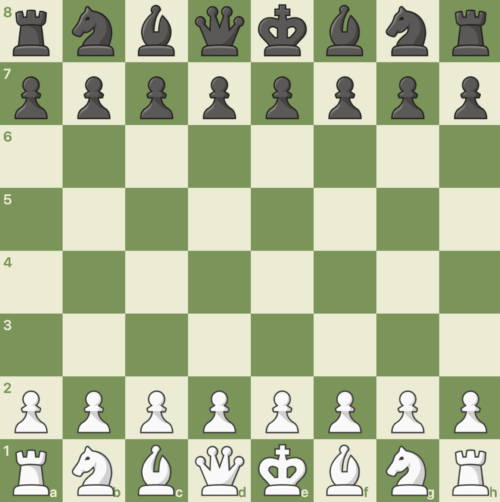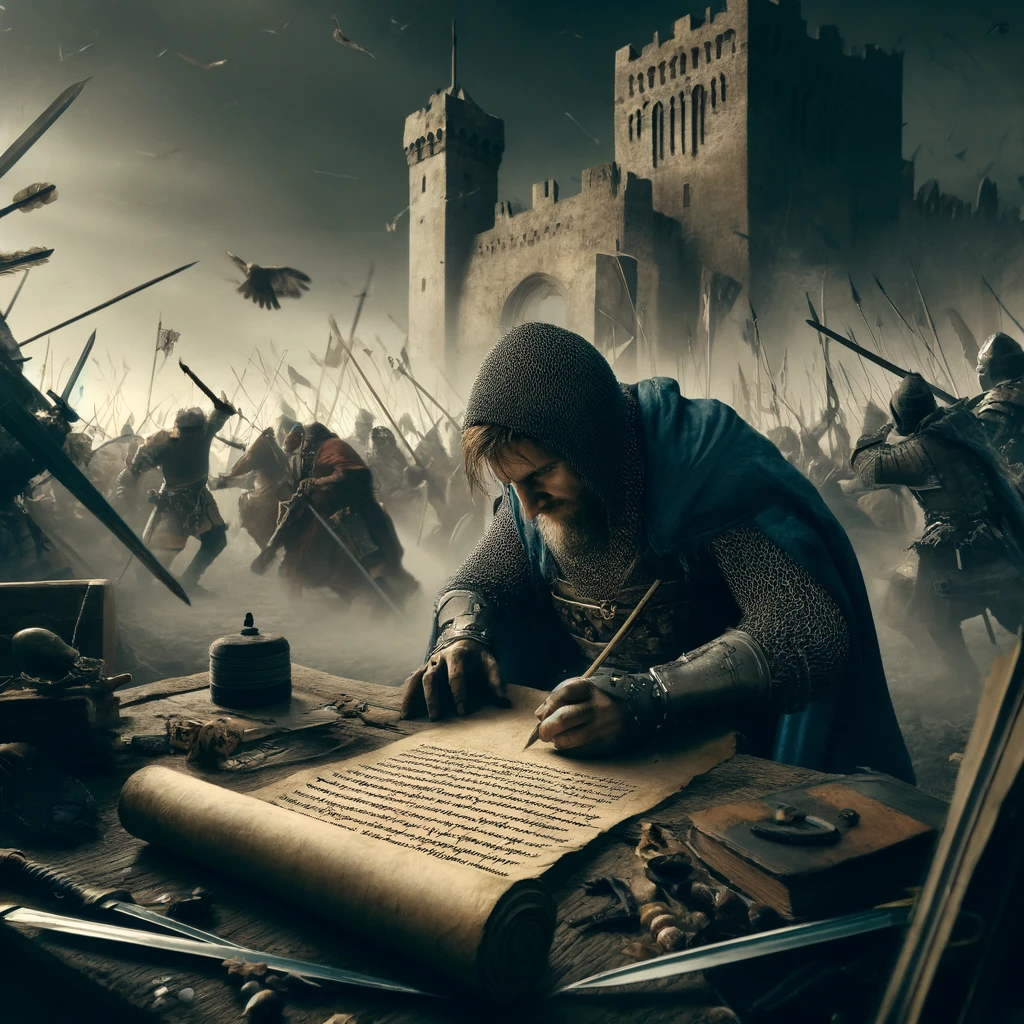Chess notation is a really cool part of the game of chess. Just like the box score in baseball, by looking at chess notation you can actually relive a chess game. So how does chess notation work?
What is Chess Notation and How Does it Work?
Chess notation is a standardized system used by chess players to record and communicate chess moves. Algebraic notation is the most common, labeling the board with letters and numbers, and assigning letters to pieces and symbols for actions.
Basics of Algebraic Chess Notation
Let’s dive into the basics of chess notation starting with how the chessboard is diagrammed and how to identify the chess pieces.
Understanding the Chessboard
The chessboard is a square board consisting of 64 squares, with each square being identified by a unique combination of a letter and a number.
The files (columns) are labeled from “a” to “h” from left to right, and the ranks (rows) are numbered from 1 to 8 from the bottom to the top.
The white pieces are placed on the first and second ranks, while the black pieces are placed on the seventh and eighth ranks.

Identifying Chess Pieces
Each chess piece is identified by a capital letter, with the exception of the pawn.
- King – K
- Queen – Q
- Rook – R
- Bishop – B
- Knight – N
- Pawn – no letter
How to Make Notation of Your Chess Moves
In Algebraic Chess Notation, a move is recorded by the letter of the moved piece (if not a pawn) followed by the square that the piece was moved to. For example, ‘Nf3’ indicates that the knight was moved to f3. If a pawn is moved, only the square it moves to is recorded. For example, ‘e4’ means that the pawn on the e-file was moved to e4.


In a game, if White’s opening move is the queen’s pawn two spaces forward, and then Black responds by moving their queen’s pawn forward two spaces, this would be notated as 1. d4, d5.
The number 1 simply refers to the number of the move for each player. If on the second move White plays c4 (this is the Queen’s Gambit), and then Black Accepts the Queen’s Gambit by capturing the c4 pawn, this would be notated like this:
- d4, d5
- c4, dxc4
Notice the x in “dxc4”? This is a special notation for a capture of White’s c4 pawn by Black’s d5 pawn. You can watch the moves in action one at a time with the highlighted notation for each move in the player below.
How to Notate Captures, Checks, and Checkmates in Chess
Let’s talk about captures, checks, and checkmates
When a piece captures another piece, as shown in the player above, the letter ‘x’ is inserted between the piece letter and the square it captures.
So, as shown above, ‘dxc4’ means that the pawn on the d-file captured the pawn on the c-file.
And If a move puts the opponent’s king in check, the move is marked with a ‘+’ symbol. For example, ‘Nf6+’ means that the knight moved to f6, putting the opponent’s king in check.
Let’s take a look at that in action in the player below. You can see White’s knight place Black’s king in check, but it’s a blunder as the knight immediately gets captured by the Queen! See how those moves are notated?
Checkmates are notated with the # symbol after the move.
Let’s take a look at a 4 move checkmate in the player below. White opens with e4, then follows that by developing their bishop (Bc4) which puts pressure on Black’s f7 pawn, and then double’s that pressure with their Queen (Qh5).
Black folds under the pressure, and the White Queen ends the game with checkmate (Qxf7#)
How to Notate Special Moves in Chess
What about special moves like castling, en passant, and promotion?
These are actually pretty cool. In my opinion, castling has the coolest notation in chess. Kingside castling is recorded as ‘0-0’, and queenside castling is ‘0-0-0’.
En passant captures are recorded by appending ‘e.p.’ after the move. For example, ‘dxe6 e.p.’ means that the pawn on d-file captured the opponent’s pawn on e-file en passant.
Promotion is recorded by appending the promoted piece’s letter after the move. For example, ‘e8=Q’ means that the pawn on the e-file was promoted to a queen.
Ambiguities and Captures
Every once in a while, two or more pieces of the same type can move to the same square. This would lead to an unclear notation if not done right. In these cases, the notation will specify which piece is moving by including the file or rank of the moving piece.
For example, if two knights can move to the same d7 square, the notation would be ‘Nbd7’ to show that the knight on the b file moved to d7.
Now what if that same move was a capture? Do you know how to notate it? It would be ‘Nbxd7’.
And if that capture puts the king in check? ‘Nbxd7+’.
What about checkmate? ‘Nbxd7#’.
Are you starting to get it? It’s actually kind of fun.
The Importance of Chess Notation
Chess notation not only allows players to record their games for future analysis but in many OTB (over the board) chess tournaments players are required to notate their moves as a way of keeping record.
In addition, if you’re learning the game of chess and wanting to study historic games, chess notation allows you to recreate and follow those games, making it easier for you to learn from the best.
Annotated games are games played by master players, with comments and explanations of the moves made, making them an excellent resource for learning new strategies and tactics.
Final Thoughts
Chess notation holds a ton of value as it helps in understanding the game. By studying the notation of games played by master players, you gain insight into their strategies and tactics. And by speaking the “language of chess” you can’t help but start to improve your game!
What do you think? How well versed are you in chess notation? Have you seen it in your online games? Have you ever had to use it in an OTB tournament? Let me know in the comments below! I love hearing from you and I always respond!



I enjoy playing chess although I am only able to play occasionally. I came across Chess Notation in the past but it seemed so complicated that I just gave up on it. Your post was however really easy to follow and to comprehend. The video was particularly useful perhaps because it provided a clear visual representation of what was been explained. It will be very useful to be in a position to review the moves made in games I play from now on so I can learn from both victories and defeats. Thank you for this insightful post.
You’re very welcome! Thanks for the comment!
This article has made me understand the terminology around chess moves a lot better, I used to get so confused by Knight to g5, that I never really understood where the knight was moving. But after reading your article and studying the chess board a little more, it makes so much sense and I now know where the pieces are moving.
Yeah, I have been playing for a while, but for some reason, I never really noticed that the board is numbered and lettered much like the Battleship game. This makes discussing moves so much easier for me now!
Thanks so much for this article on chess notation! I am not sure I ever would have caught on without it.
Stacie
Glad you enjoyed the article! Thanks for the comment!